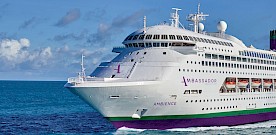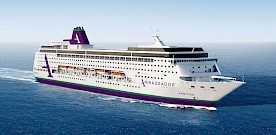10 Canary Islands facts you didn’t know
Tuesday, 28 September 2021
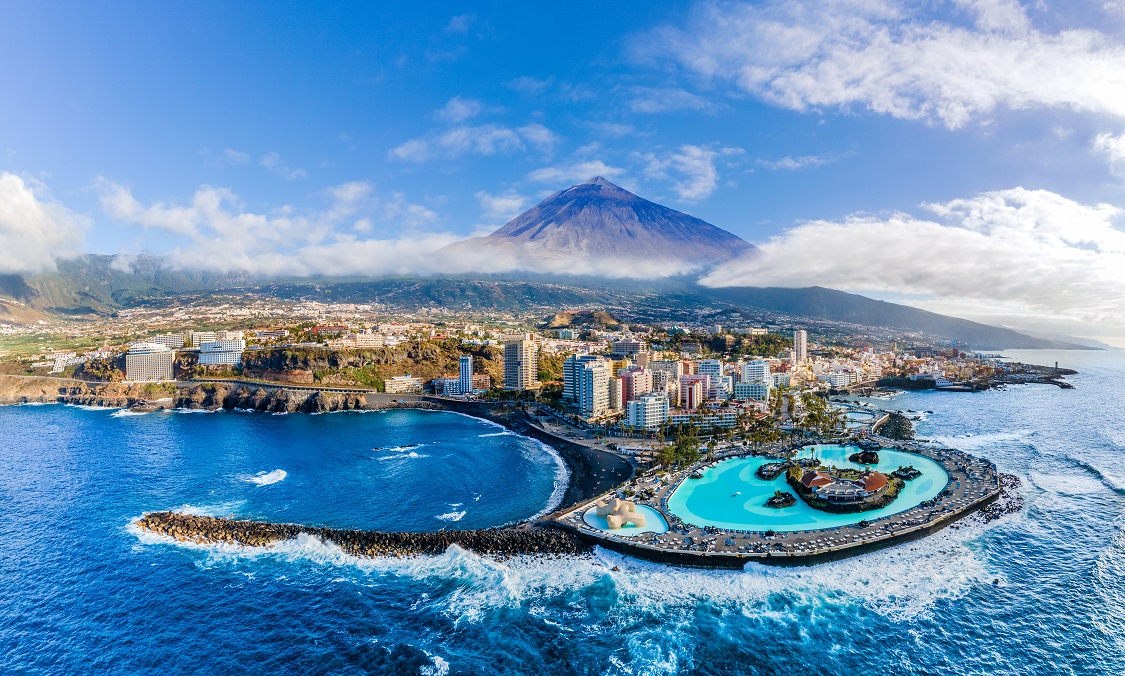
A sun-soaked collection of Spanish islands, the Canary Islands are home to some of the most dazzling beaches and multifaceted landscapes in Europe. With gorge-worthy cuisine, dreamy volcanic backdrops and year-round sunshine, it’s no surprise as many as 12 million visitors fly over or hop on a Canaries cruise every year.
But besides its tranquil and indulgent offering, there’s more to this spellbinding archipelago than many travellers know about. Read on to find out some interesting Canary Island facts that will change how you view these compelling islands.
1. There are eight main islands
You might ask yourself ‘how many Canary Islands are there?’, knowing about some of the more popular ones to visit or not realising that they make up a part of the Canaries. In total, there are eight main Canary Islands, the largest island of the archipelago is Tenerife, followed by Fuerteventura, Gran Canaria, Lanzarote, La Palma, La Gomera and El Hierro, with the smallest being La Graciosa.
Tenerife is the largest island and also the most populated, and between Tenerife and Gran Canaria over 80% of the total population of the Canary Islands can be accounted for. The islands also share two capital cities across these islands, Santa Cruz de Tenerife and Las Palmas de Gran Canaria.
2. You can swim with sea turtles in Tenerife
Swimming with turtles in Tenerife is certainly an unforgettable experience and something many people don’t realise they can do. On the southern tip of Tenerife, the picturesque beach of El Puertito is home to a resident group of sea turtles. In fact, five of the seven existing species of turtles in the world live around the island of Tenerife, including loggerhead turtles, kemp’s ridley, green, hawksbill and the leathery turtle.
Divers and snorkelers might just be lucky enough to spot green sea turtles, octopuses, and many beautiful fish in their natural habitats off the coast at El Puertito, one of the most biodiverse marine sites in the Canary Islands. Along with the ocean’s smaller creatures, whales and dolphins can also be seen alongside sea turtles in Tenerife, as around 500 resident short-finned pilot whales and bottlenose dolphins live in the clear waters on the south coast.
READ MORE: Tenerife: Off the Tourist Trail
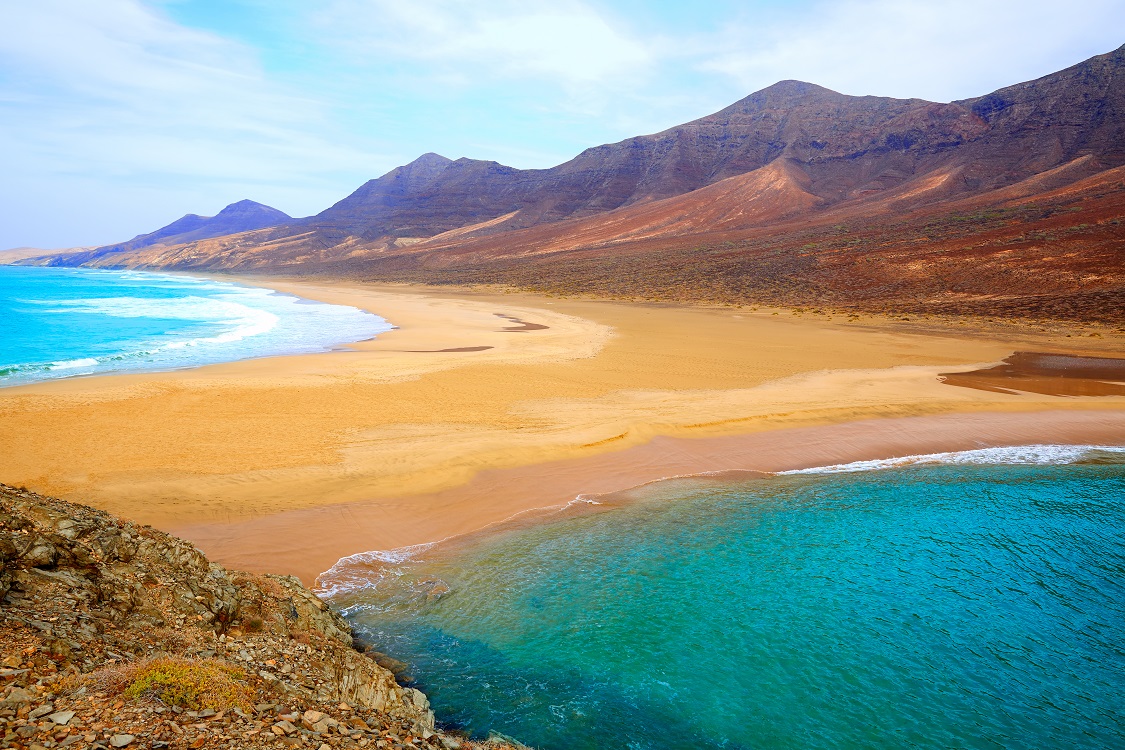
3. Fuerteventura is over 20 million years old
The Canary Islands were created by a series of volcanic eruptions millions of years ago. The oldest of these is Fuerteventura, which is thought to be over 20 million years old, followed by Lanzarote, Gran Canaria, Tenerife, La Gomera, La Palma and El Hierro, respectively. Because each island originated from separate volcanoes on the ocean floor, their landscapes are very unique. This is except for Lanzarote and Fuerteventura, which are more similar and were once formed a single island.
4. The Canary Islands were named after the Latin word for ‘dog’
In answer to the question ‘what are the Canary Islands named after?’ many people’s first thought goes to the eponymous bird, but this is not correct. In fact, it was the other way around with the canary bird being named after the archipelago.
It wasn’t from birds that the Canary Islands, known in Spanish as Islas Canarias, got their name, but dogs, or perhaps seals depending on what you believe. The name comes from the Latin word for dog, canaria, and was given by the first Europeans to arrive here. The story goes that when they landed ashore, they were met with large dogs on the island of Gran Canaria. However, it’s known that seals used to inhabit the island and were named ‘sea dogs’ by the Romans, so perhaps it’s them the islands are named after instead.
5. La Gomera has its own language, spoken through whistling
You read that right! The island of La Gomera has its own whistling language, Silbo Gomera. The language is thousands of years old and still spoken by over 22,000 inhabitants of the island. The language was initially invented so locals could communicate with one another across the island’s vast wilderness comprised of deep valleys and rifts. Watch the below video to hear this remarkable language for yourself.
6. Tenerife is home to the third-tallest volcano in the world
On the island of Tenerife, you’ll find the volcanic mountain of El Teide, which stands at a whopping 3,718m (12,198ft). Mount Teide is the third-tallest volcano in the world with its summit being the highest point in Spain. The volcano and surrounding area are now a national park and was named a UNESCO Heritage Site in 2007.
7. The Canary Islands were home to a giant lizard species
Believe it or not, the Canary Islands were inhabited by a giant lizard species called ‘giant gallotia’ before humans settled on the islands. They were roughly the size of Komodo dragons and can still be found on the island today – in the form of a much smaller relative of the original beast, though!
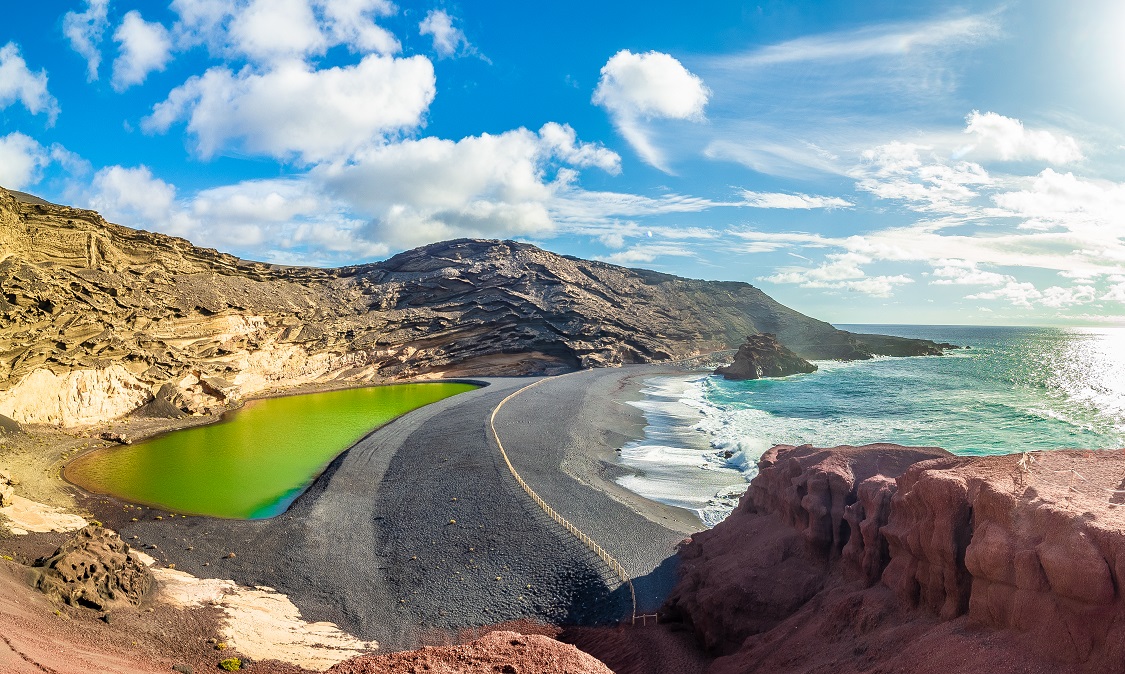
8. Lanzarote’s El Golfo crater glows green
In Lanzarote, there is a lake-like crater filled with trapped seawater that has a striking green hue. Why? It’s because of the unique kind of algae that grows here. It’s an unusual sight, especially against the rich blue background of the ocean and is worth the hike to find.
9. El Hierro is the first self-sufficient island in the world
The smallest and most southerly of the islands, El Hierro has recently become the first island to use 100% renewable energy, sourcing most of its power from the wind, as well as sun and water.
Declared a UNESCO World Heritage Site, the El Hierro Tourist Board describes the island as having a “unique geological and natural heritage, characterised by its landscapes and its volcanic origins. A well-loved and well-maintained place where the inhabitants ensure it remains unique and clean.”
10. Lanzarote is home to volcanic vineyards
As Lanzarote is a volcanic island, it has almost no soil or natural vegetation. So, in order to grow grapevines here, winemakers had to think outside the box. Unlike traditional vineyards which stretch high and wide, on Lanzarote you’ll find vineyards take the form of separate vines in individual craters. The volcanic soil of the island, black in colour, gives the wine a unique taste and is a must-try when visiting.
READ MORE: Must-try Canary Island’s food specialities
Canary Island facts you may not know
- There are eight main islands
- You can swim with sea turtles in Tenerife
- Fuerteventura is over 20 million years old
- The Canary Islands were named after the Latin word for ‘dog’
- La Gomera has its own language, spoken through whistling
- Tenerife is home to the third-tallest volcano in the world
- The Canary Islands were home to a giant lizard species
- Lanzarote’s El Golfo crater glows green
- El Hierro is the first self-sufficient island in the world
- Lanzarote is home to volcanic vineyards
With so much to offer in the way of culture, history and natural beauty, the Canary Islands are a must-visit destination that many travellers find themselves returning to again and again. Perfect for a winter sun cruise destination, these islands are easy to fall in love with. If you aren't sure the Canary Islands are for you, then why not check our late cruise deals and find a destination that suits you?
For more tips, guides, and advice, make sure to visit our blog page.



